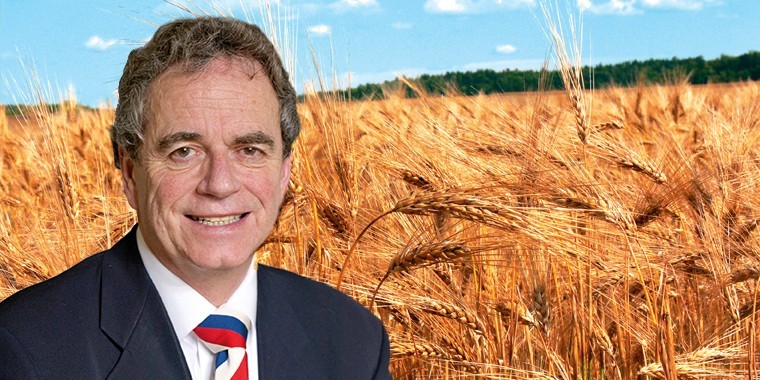As we enter the Brexit transition period, we should be able to continue exporting to the EU – tariff free – after 31 January, then up to 31 December and beyond.
Well, we should, but we can’t. Not yet anyway. The government want to pass a bill making it unlawful for any extension of the transition period beyond 31st December 2020. Most agree that the free trade negotiations plus everything else to be finalised with the EU will take longer than one year, but still we are seeking to impose another ‘cliff edge’ drama with another ‘crash out or else’ date of 31 December 2020!
I don’t have a queue of potential EU maltsters wanting to buy more barley after January, but if I did, they would not take the risk of having to pay a subsequent tariff – and I cannot either. So no new export trade is possible with the EU, for now. It looks as though we will have the biggest UK spring barley plantings since 1988, so we could really do with those export sales for October/December 2020.
Better new year news, is the trade war between the USA and China appears to be over. President Trump’s office has announced the deal is “done and absolutely complete”. We have been here before, but on the back of this soya and maize have rallied on Chicago market (17/12/19). Let’s hope it continues! Our own wheat futures have risen by £4 per tonne on May 2020 from the pre-election depressingly strong sterling situation.
Locally, and nationally, the drills have been put away. Those with wheat seed in the shed will still try and plant it, possibly up to the end of March. The further north you go from the Thames Valley, up through the Midlands, the worse the planting problem is. We have grain groups in Scotland and the borders, Norfolk, and all across the South where wheat planting has caught up well. In most cases it’s emerged, and apart from sitting in water, does not look too bad. But there are other counties like Lincolnshire which have hardly anything planted. The AHDB early bird survey suggesting UK wheat planting being only 9% down. For me the trigger point is 12% reduction in crop size; at that the UK has to import wheat after the 2020 harvest. However, the other side of this equation is UK barley.
The AHDB are talking of a 29% increase in spring barley plantings. We usually have an exportable barley surplus of 1.5 million tonnes anyway. So with increased plantings you can see UK barley going straight away to export parity on price (meaning it has to compete with all the cheap Jack barley in the Black Sea from July onwards), whereas wheat is on course to be priced at import parity. So new crop feed barley may have no ‘bottom’, but wheat does have a ‘top’. At present that ‘top’ is the imported value for November 2020. This is about £163 if you had your mill at the port. So that means the £150 plus ex farm for November 2020 wheat – which I have been suggesting selling – is back on again. Of course if you haven’t planted it you cannot sell it, but if you have, selling a percentage of what has emerged still makes sense.
Don’t forget that even if the UK is at the minimum import price parity for new crop (like the barley in reverse) it will have the cheapest sellers queuing up. Last year the UK imported feed wheat from the Black Sea and Ukraine, but, imported wheat is not the only threat. Maize spoilt the party in 2018/19. Already South American new crop maize has been traded to the UK at under £150, for September. Today the differential between UK new crop feed barley and wheat is £25 per tonne for November 2020. So is barley too cheap? Or wheat too dear? Or is it a fair reflection of actual intended plantings? Either way it will change!
If imported wheat stays at £160 – which it won’t – compounders will seek to include more barley, and the gap should narrow with barley increasing in value. With new crop malting barley exports uncertain until the final transition period and deal is sorted, the UK will need to get stuck into capturing its share of third country big boat feed barley trade, from the start of harvest. Openfield has just loaded from Portbury Grain Terminal, the largest single shipment from the UK this season – being 64,000 mt of feed barley destined for Saudi Arabia. We will need to keep this going to remove the rest of this year’s surplus, and then start on new crop.
To sum up, compared to 12 months ago, we have a better stable government and certainty that we are leaving the EU, but not sure if there will be another ‘cliff edge’ to negotiate. Crops are far worse than last year, but we are enjoying better grain values in the second half of this season, than the record harvest could have dictated with some exciting prospects for new crop trade!




